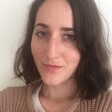Rights and Accountability 3 July 2017

Palestinians visit the Ibrahimi mosque in the occupied West Bank city of Hebron on 25 February 2014, 20 years to the day after an American Jewish settler opened fire killing 29 worshippers there.
APA imagesIsrael is refusing to give visas to a team of investigators with UNESCO who are scheduled to visit Hebron’s Old City in the occupied West Bank.
The visit was to take place ahead of a July vote by the UN educational and cultural organization to consider the Old City an endangered World Heritage Site.
Calling the move “principled and strategic,” Israel’s ambassador to UNESCO, Carmel Shama Hacohen, said the UN team’s visit was based on “lies that plot against Israel.”
The UNESCO team was to provide its findings to the International Council on Monuments and Sites, the body that considers which sites should be placed on the the World Heritage in Danger list.
Hacohen said the group was denied entry to Israel because in the past UNESCO had overruled the council’s recommendations against placing sites in the occupied West Bank on the endangered list. It would be “a shame to waste the time and money,” Hacohen said, for the team to go to Hebron.
After UNESCO granted Palestine full membership in 2011, the Palestinian Authority applied for the agency to recognize the Church of Nativity in Bethlehem as an endangered World Heritage Site.
In 2014, UNESCO recognized the terraces of Battir in the occupied West Bank as a World Heritage Site, helping to protect the village’s ancient agricultural landscape and culture from Israel’s plans to build its separation wall through it.
Hacohen described the planned UNESCO mission to Hebron as a broader campaign of “lies that plot against the state of Israel as well as the history and the connection of the Jewish people to this important holy site.”
Violent takeover
Hebron’s Old City is the site of the Ibrahimi mosque, known to Jews as the Cave of the Patriarchs. Muslims and Jews hold that this is where the prophet Abraham was buried.
It is one of 35 potential additions around the world that the World Heritage Committee will consider when it meets in Poland later this month.
On 25 February 1994, Baruch Goldstein an American Jewish settler from Brooklyn walked into the mosque during Ramadan prayers and opened fire, killing 29 Palestinian men and boys and injuring dozens more, before his victims overwhelmed him and beat him to death.
In the days immediately following the massacre, Israel took action not against the settlers but against Palestinians: Israeli forces killed and injured dozens more unarmed Palestinians protesting the mosque massacre across the West Bank and Gaza Strip.
This set the pattern: Israel escalated its repression of Palestinians, gradually allowing the settlers to take over more of the city.
The Ibrahimi mosque was partitioned between the settlers and Palestinians. In 1997, settlers were rewarded even further for Goldstein’s massacre when the Palestinian Authority agreed to allow Israel to partition Hebron itself into two zones: “H1” and “H2.”
H1 is nominally administered by the Palestinian Authority and is home to more than 120,000 Palestinians.
H2, under full Israeli military rule, includes Hebron’s historic Old City as well as the Ibrahimi mosque.
Israeli occupation forces severely restrict the movement of thousands of Palestinians in H2 while about 800 Israeli settlers in the heart of the city move about freely under army protection, including on segregated roads.
Checkpoint shootings
According to the Israeli news website Ynet, Israel fears that including the Old City on UNESCO’s World Heritage List, could impose limits on Israeli construction and protect the Ibrahimi mosque and areas around it from development.
Inclusion on the list could also heighten scrutiny of Israel when it erects new checkpoints in the Old City or carries out work that is damaging to the site.
In the last two years, checkpoints in the heart of Hebron have been the sites of numerous slayings of Palestinian civilians by Israeli occupation forces, which in a number of cases Amnesty International has urged be investigated as extrajudicial killings of persons who posed no threat to soldiers.
It was near such a checkpoint in March 2016 that Elor Azarya took aim and fired fatally at the head of injured and incapacitated Palestinian Abd al-Fattah al-Sharif, a videotaped killing for which the Israeli army medic received a slap on the wrist.
Ynet also reported that Israel was scrambling to find seven countries whose votes are needed to block the UNESCO motion, which also includes a clause rejecting Israel’s claim of sovereignty over occupied East Jerusalem.
In April, The Times of Israel reported that the Trump administration had instructed US diplomats to lobby UNESCO delegations to help Israel secure enough votes against a resolution that criticized Israel’s actions in Hebron and Bethlehem.
Blocking UN representatives
Meanwhile, Israel continues to prevent the entry of the United Nations special rapporteur on human rights in the occupied Palestinian territories.
According to the Palestinian Human Rights Organizations Council, Israel has not responded to any of Michael Lynk’s requests to conduct official visits. Lynk was appointed in 2016. Israel has prevented the entry of all UN special rapporteurs since 2008, according to the human rights groups.
Israel is obliged under the UN Charter to allow UN officials to access its territory.
Lynk’s predecssor, Makarim Wibisono, resigned in protest at Israel’s refusal to allow him to enter the occupied Palestinian territories.






Comments
Israel's belligerance
Permalink Guy replied on
How can they refuse entry to human rights UN representatives ? And the world says nothing , I am lost for words............
Petition
Permalink Sharif replied on
Hello,
I just signed the petition, “Israeli Occupation Forces: Free Khalida Jarrar and Khitam Saafin Now.” I think this is important. Will you sign it too?
Here’s the link:
https://www.change.org/p/israe...
Thanks,